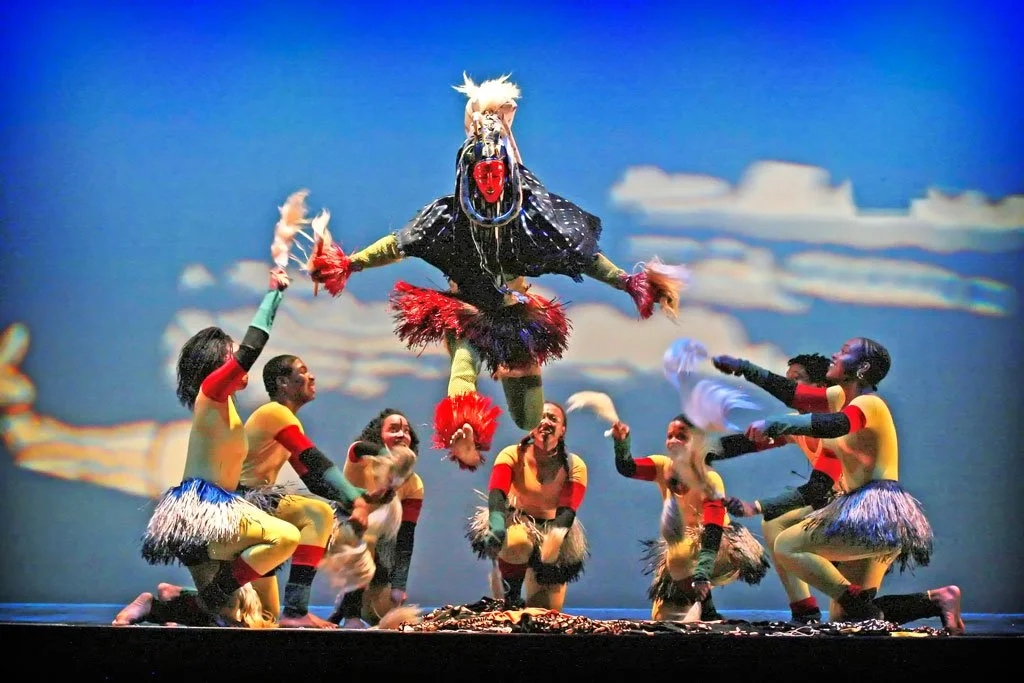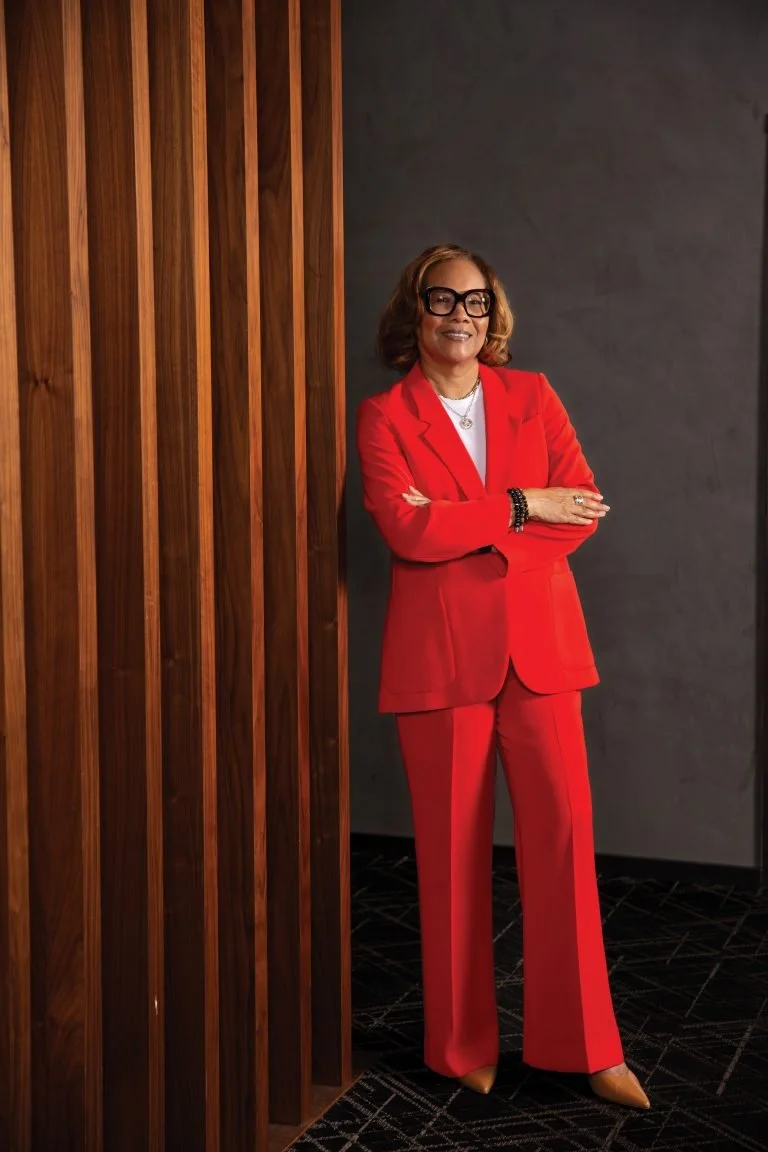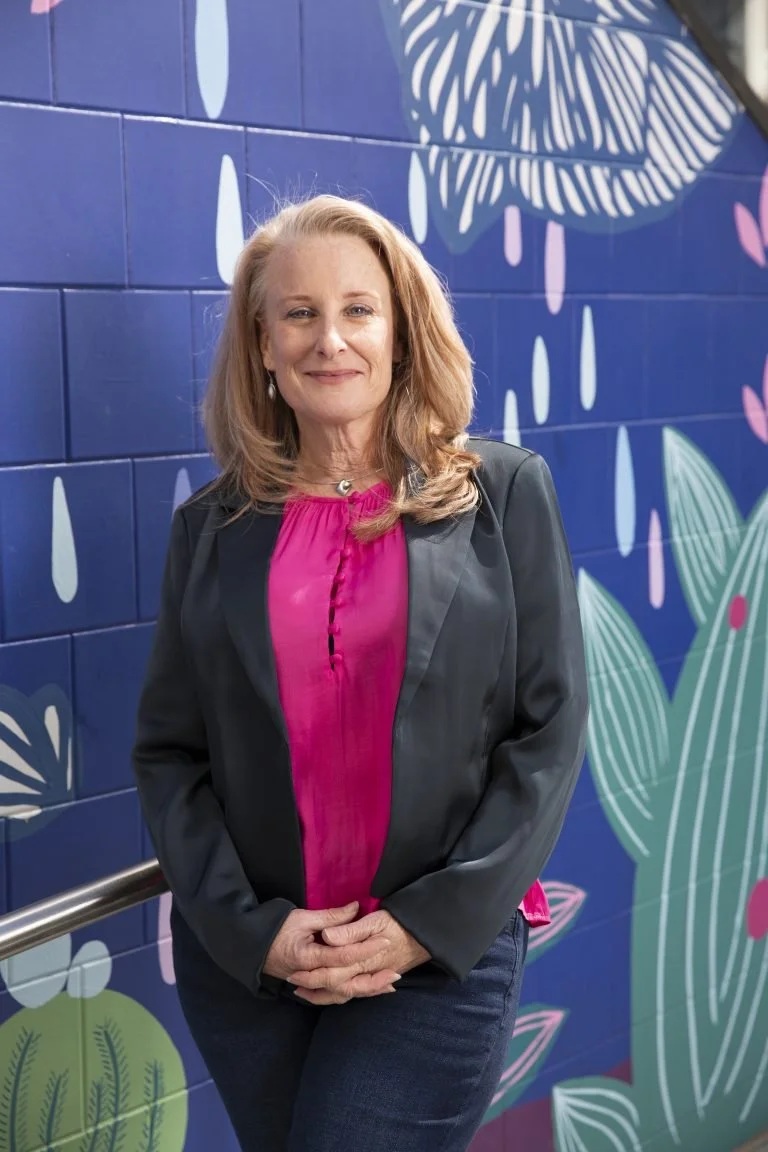
-

How ‘Sinners’ Honors 1930s Black Southern Style Through Costume
-

Pamela Donohoo takes aerial artistry seriously at Public Art Futures Lab
-

Japanese Hip-Hop Finds Inspiration in the Capital of the South
-

Laysha Ward Gives Us the Blueprint for Authentic Leadership
*In Collaboration with Penguin Random House
-

‘Blue Sun Palace’ reflects on anti-immigrant hate, four years after Atlanta spa shootings
-

From Harm To Healing: The Brands Revolutionizing Black Beauty
-

Doechii Is Who Hip-Hop Has Been Waiting For
-

Adult Swim’s surprise feature film returns with another horrifying sequel
-

‘WE LIVE IN TIME’ (2024) REVIEW: Post-Pandemic Adrenaline Junkies Take a Backseat to Romance
-

The powerhouse producer educating the next generation of Georgia film professionals
-

In new SCAD FASH exhibit, Oscar-winning costume designer Sandy Powell’s work comes alive off-screen
-

Sabrina Carpenter is Leading the Retro Fashion Comeback
Nearly 10 years in the making, The Gryphon King marks a major debut for Georgia author Sara Omer. Out this month from Titan Books, the novel proves that some stories are worth the time it takes to find their voice. In a recent conversation with ArtsATL, Omer opened up about her writing process, the Atlanta literary scene and what it means to write dark fantasy novels rooted in real life perspectives.
Everyone knows the story: a group of tipsy women laughing on a couch holding glasses of red wine chatting about a novel only half the group finished reading. In between sarcastic answers to discussion questions found on Google, they talk about their lives balancing partners, kids, and careers. It’s cathartic and chaotic.
They may chat goodnaturedly about the book choice (or complain about the wine choice), but they love being in community. That familiar scene has been shown in countless films and TV shows in the last few years. However, across kitchen tables, in bookstores, and on BookTok feeds, women in today’s book clubs are redefining what it means to read, gather, and create together.
At the Atlanta African Dance & Drum Festival, the steady beat of the drums and the grounded movements of the dancers speak a language older than words, one that restores our connection to home and honors who we are.
Hosted by the Afrikan Djeli Cultural Institute, the annual celebration has become one of the most anticipated summer festivals. Now in its 16th year, the event returned to East Point with three days of music and movement workshops, an artisan marketplace and a high-energy finale concert featuring the acclaimed St. Louis-based company Afriky Lolo.
In the Studio with Tim Short — Burnaway
In his home studio in Stone Mountain, Georgia, narrative painter Tim Short’s distinctive practice centered on oil paintings offers an exploration of Black identity through imaginative, atmospheric art styles. His series For Da Folks exemplifies this approach, transforming intimate family moments into narratives imbued with cosmological and celestial imagery. By employing grandiose color schemes and dramatic lighting in his works, Short subverts traditional associations of lightness with divinity, instead granting a metaphysical iconography to Blackness.
On a rainy Saturday morning in May, an inconspicuous dance studio at the end of a quiet corridor is teeming with life. A woman carrying a large white flag arrives to rehearse her colorguard routine in a private room. Minutes later, a small group of ballet dancers shake off their umbrellas and waits in the lobby for their early morning session. In the main studio, a dance instructor sprawls out on the wooden floor, eager to share her story.
I don’t remember the last time I laughed out loud at a song lyric. Not an obligatory snort or a little nose exhale—an actual loud, uncontrollable belly laugh. But Sailorr’s hit single “Pookie’s Requiem” had me cracking up within the first 20 seconds. Maybe it was her ex’s cringey pet name for her or her unhinged scream-cries at the end of the track but I’m convinced this is the funny, chaotic breakup song everyone needs in their playlist. I haven’t found a track this playfully petty since Mariah Carey sang, “Them chickens is ash and I’m lotion,” nearly two decades ago.
Women Making a Mark Series: Terri Block — Atlanta Magazine
Terri Block doesn’t just talk about change; she makes it happen. For 25 years, she’s led social-impact initiatives that ensure Atlanta’s small businesses and charitable foundations thrive. As Atlanta market executive for Bank of America, she has directed millions in local grants, mobilized employees to contribute more than 300,000 volunteer hours, and championed partnerships creating lasting stability and growth across the metro area.
Women Making a Mark Series: Denise Starling — Atlanta Magazine
For Denise Starling, being on the move is a strategy, not just a statement. As executive director of Livable Buckhead for over two decades, she has been at the forefront of transforming the district into a more eco-conscious, connected community. In this role, she facilitates the transportation, sustainability, and workforce housing initiatives that will reshape Buckhead’s future while staying true to one guiding principle: innovate or die.
Ryan Coogler’s original Southern Gothic film ‘Sinners’ (2025), is equal parts horror-thriller, romance epic, and Black heritage homage. Set in 1932 Mississippi, against the backdrop of Jim Crow–era racism and the birth of blues music, ‘Sinners’ follows the story of twin brothers Smoke and Stack (both portrayed by Michael B. Jordan), as World War I veterans who return home to open a juke joint. However, their business venture becomes a battleground against white supremacy and supernatural forces when vampires, who feast on more than just blood, threaten their small town community.
A new social club evokes the famous salons of the Harlem Renaissance — Atlanta Magazine
On a recent evening inside One Contemporary Gallery in Old Fourth Ward, the usual quiet of an art space gave way to lively conversation as a different kind of event began. A crowd of around one hundred people, from young children to retirees, helped themselves to a spread of sandwiches, fruits, and drinks before making their way upstairs to eat, view the artwork, and mingle with familiar faces and new attendees.
For generations, beauty care for Black women has meant more than a 10-step nighttime routine and lemon water facials. It’s been a fight for safety and visibility. From the pioneering efforts of Annie Turnbo Malone and Madam C.J. Walker, who revolutionized the beauty industry in the early 20th century to the ‘Black is Beautiful’ movement of the 1960s and the Natural Hair Movement in the 2000s, the legacy runs deep.
Adult Swim’s surprise feature film returns with another horrifying sequel — Atlanta Magazine
Billing itself as “unapologetically absurd, dark, and wildly comedic,” Atlanta-based Adult Swim‘s unconventional original film Yule Log returns with a sequel, Yule Log 2: Branchin’ Out, on December 6. Shot entirely in the city, the production relied on a crew comprised solely of local talent.
The trailer for We Live in Time felt like a knife in the throat, and watching the film was like having my head sliced clean off.
Don’t worry; that’s as graphic as this review will get. Thankfully, for love-starved cinephiles, audiences are finally getting their fill on romance and not CGI roadkill. After a stretch of post-pandemic, action-packed blockbusters, the film world seems to be craving a breather with romance stepping in to fill that void. Instead of the cinematic chaos that has dominated theaters in the years following the COVID-19 pandemic, viewers have embraced the joy and familiar comfort of love stories. Films like We Live in Time have tapped into something simpler yet profound: the desire for connection.
When the credits roll on Blue Sun Palace, it leaves behind an ache that only comes from connecting with people we too often overlook. Constance Tsang’s soft, deliberately-paced feature film debut, Blue Sun Palace, stars Lee Kang-sheng (Cheung), Ke-Xi Wu (Amy) and Haipeng Xu (Didi) as three Chinese immigrants living in Flushing, Queens, grappling with complex relationships, loss and the obligations of family.
While some people master one role in the filmmaking industry, Ashley L. Canfield has found her niche in three, with writing, directing, and producing serving as powerful outlets for telling stories that matter. Born and raised in The Bronx, New York, her goal has always been to blend her passion for storytelling with her commitment to uplifting underrepresented voices in the film industry.
Doechii Is Who Hip-Hop Has Been Waiting For — Her Agenda
Whether she’s calling herself the hip-hop Madonna, the trap Grace Jones, or the swamp princess, in 2025, everyone knows the name Doechii. For many, the first introduction to her discography came with her 2020 hit song “Yucky Blucky Fruitcake,” inspired by the popular Junie B. Jones children’s book series from the 90s. The titular kindergartener was bold and rebellious, a persona that resonated with Doechii throughout her childhood in Tampa, Florida.
When Megan Thee Stallion’s viral 2024 hit “Mamushi” was released, listeners were surprised when Yuki Chiba’s rapid-fire Japanese rap suddenly cut through the speakers. The song, named after a venomous Japanese snake, was many Americans’ first introduction to Japan’s thriving hip-hop scene. But that country’s hip-hop roots reach back to the 1980s, when elements of American hip-hop culture—including breakdancing, graffiti, and fashion—found their way to and inspired a new generation of fans and artists.
Suspended several feet above the ground with colorful silks, hoops and harnesses, Pamela Donohoo’s performances combine graceful extensions with heart-stopping drops that transform her movements into visual language. Atlanta’s art scene is in constant motion, and few embody this movement more literally than Donohoo, an aerialist and artistic director redefining the boundaries of tech-infused public art. Donohoo weaves raw emotion and storytelling into every composition, showing how much athleticism and depth of experience are essential to creating this art form.
The powerhouse producer educating the next generation of Georgia film professionals — Rough Draft Atlanta
It’s time to say the quiet part out loud: Georgia’s film industry faces an uncertain future, and that reality unnerves many in the business. Ask anyone who works in entertainment, and they’ll tell you it’s been an unsettling year. As reported by WJBF, in 2022 the Georgia Screen Entertainment Coalition said there were more than 400 productions in the state with more than $4 billion invested in those productions. But data released in August shows that in 2024, that number dropped to 237 productions and $2.6 billion.



















